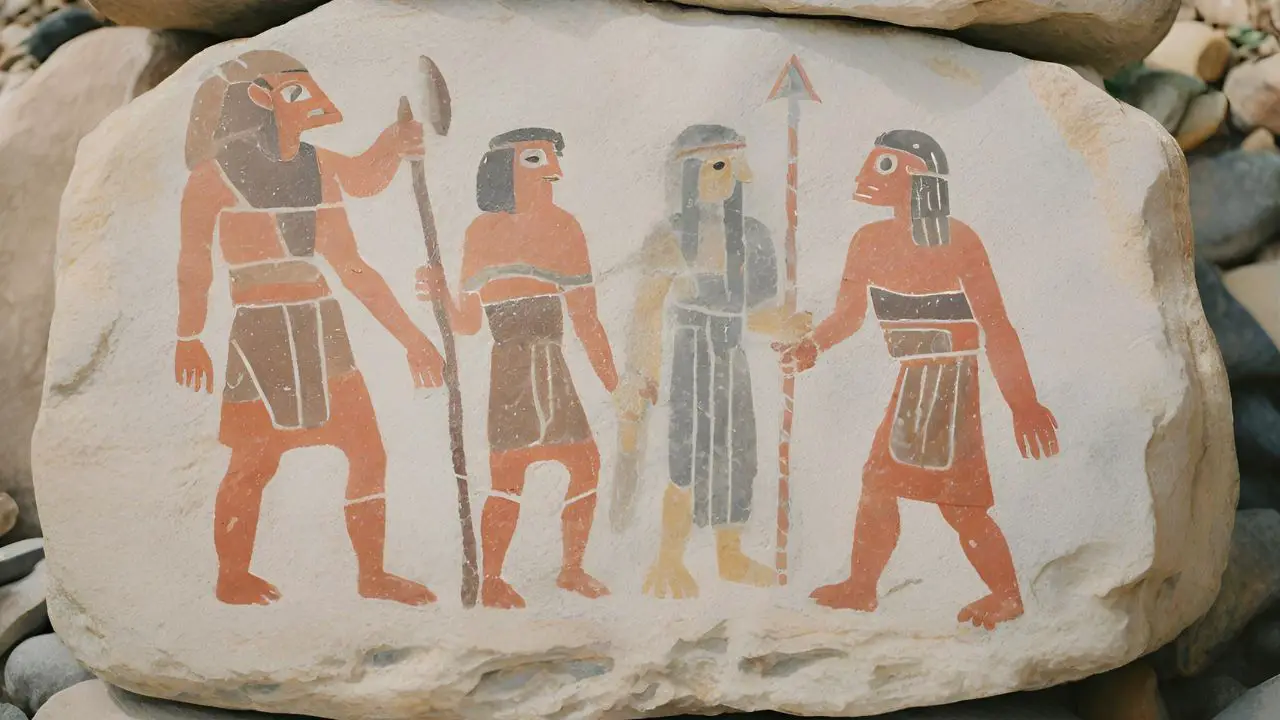The Stone Age is a super old time in history that happened a long, long time ago. It’s divided into three main parts:
- Paleolithic: This is the “Old Stone Age,” when people were mostly hunters and gatherers. This part lasted the longest and is the earliest stage.
- Mesolithic: This is the “Middle Stone Age.” People started to settle down a bit more and began fishing and farming.
- Neolithic: This is the “New Stone Age,” when people really got into farming and started to live in villages.
So basically, the Stone Age is like a big, long story that starts with people living very simply and ends with them figuring out farming and making communities.
Art in the Stone Age
Significance of Art
Now, let’s talk about art during this time. You might wonder why art is a big deal when stone age people were busy hunting and trying to survive.

Well, art was super important for a few reasons:
- Communication: Not everyone could read or write, so drawing and carving were ways to tell stories or share news.
- Expression: Just like today, people back then had feelings and ideas they wanted to share. Art was a way to show what was on their mind, like love, fear, or excitement.
- Cultural Identity: Art helped people feel like they belonged to a group. Whether it was a special design or a story told through pictures, art was a way to say, “This is who we are.”
So, even though life was tough, art was a way for people to connect, share, and make their world a little more colorful.
And that’s why we’re going to dive into the amazing world of Stone Age art!
Types of Art
Cave Paintings
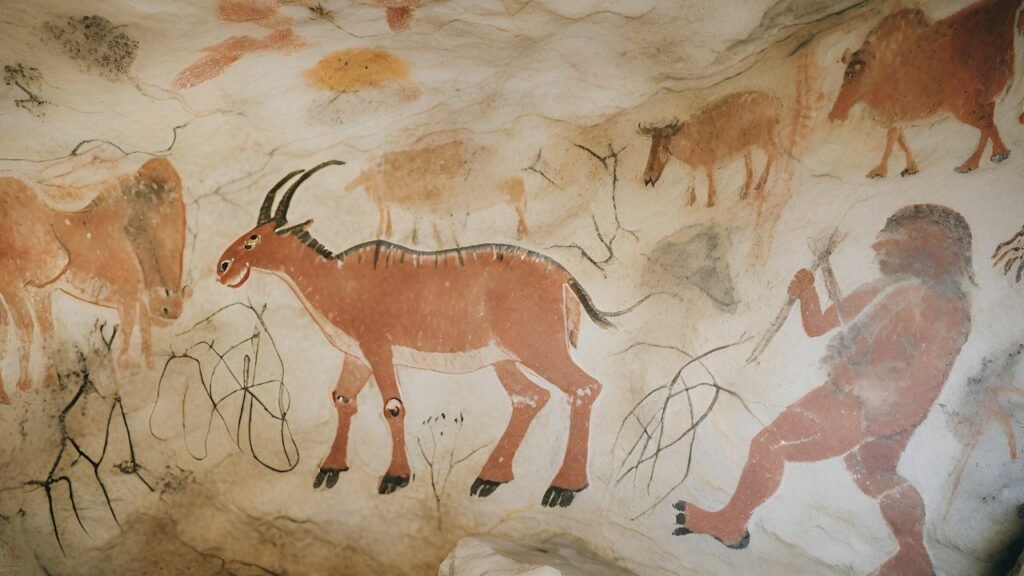
You know those awesome drawings inside caves? Places like Lascaux and Altamira are famous for them. People back in the Stone Age used to paint animals like deer, bison, and even handprints on cave walls. They used stuff like charcoal and colored rocks to make these paintings. It was their way of saying, “Hey, look at the cool animals we’ve seen!”
Sculptures
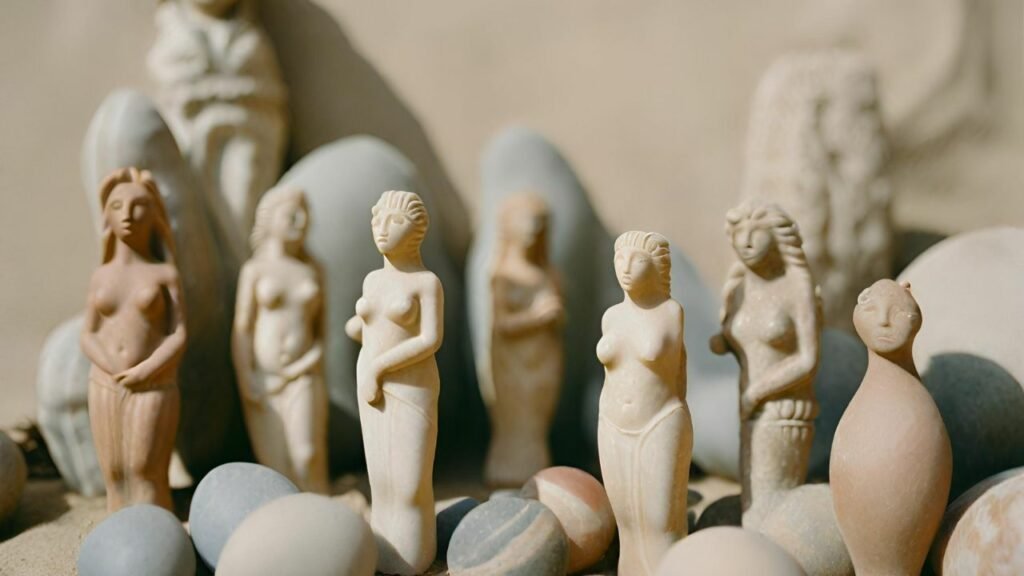
People didn’t just stop at painting; they also made sculptures. Ever heard of Venus figurines? These are small statues that usually look like women and might have been symbols of beauty or fertility. They also carved animals out of rocks, bones, or wood. These 3D artworks were like the action figures of the Stone Age!
Petroglyphs and Engravings
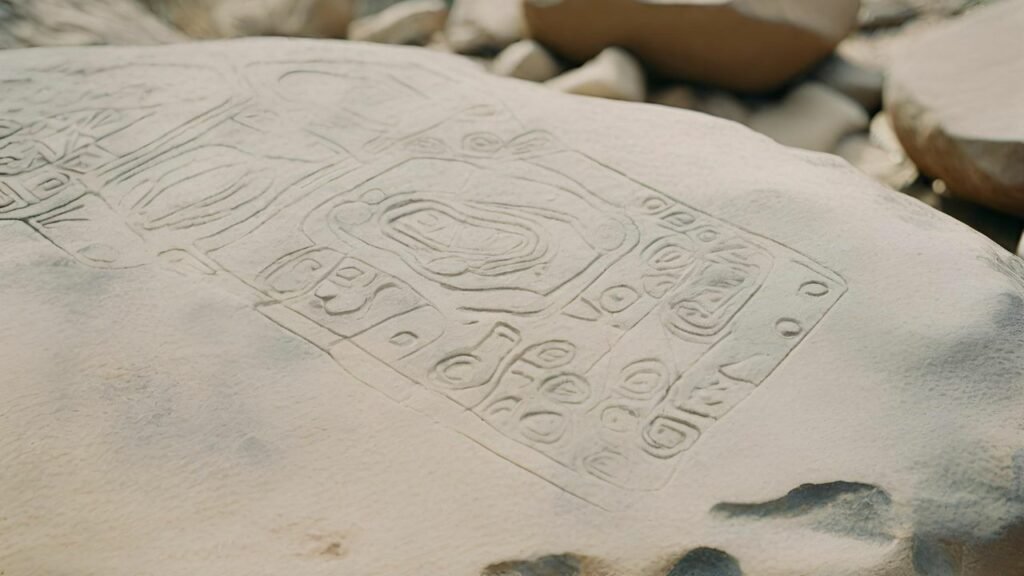
Besides painting and sculpting, people also liked to carve designs into rocks or bones. These are called petroglyphs if they’re on rocks and engravings if they’re on bones or antlers. They could be simple shapes or complex scenes, and they were another cool way to tell stories or mark territory.
Ceramics

Pottery is another form of art that started to show up, especially in the New Stone Age. People figured out how to shape clay into pots and bowls, and then they’d fire them in a kiln to make them hard. These pots weren’t just useful; they were often decorated with patterns and designs, making them pretty to look at too.
Textiles and Weaving

Now, this one’s a bit rare, but there’s some evidence that people in the Stone Age did a bit of weaving. They used plant fibers or animal hair to make simple textiles. These could be used for clothing, bags, or even as decorative pieces.
Body Art
Last but not least, let’s talk about tattoos and piercings. Yup, even back then, people liked to decorate their bodies. They used sharp objects to make piercings and might have used natural dyes for tattoos. It was a bold way to stand out and show off their individual style.
Themes and Subjects
Animals
People in the Stone Age really liked drawing animals. You’ll find lots of paintings and carvings of deer, bison, and even mammoths. Why? Well, animals were a big part of their life—they hunted them for food and used their skins for clothes. So, when you see an animal in Stone Age art, it’s like a shoutout to how important animals were to them.
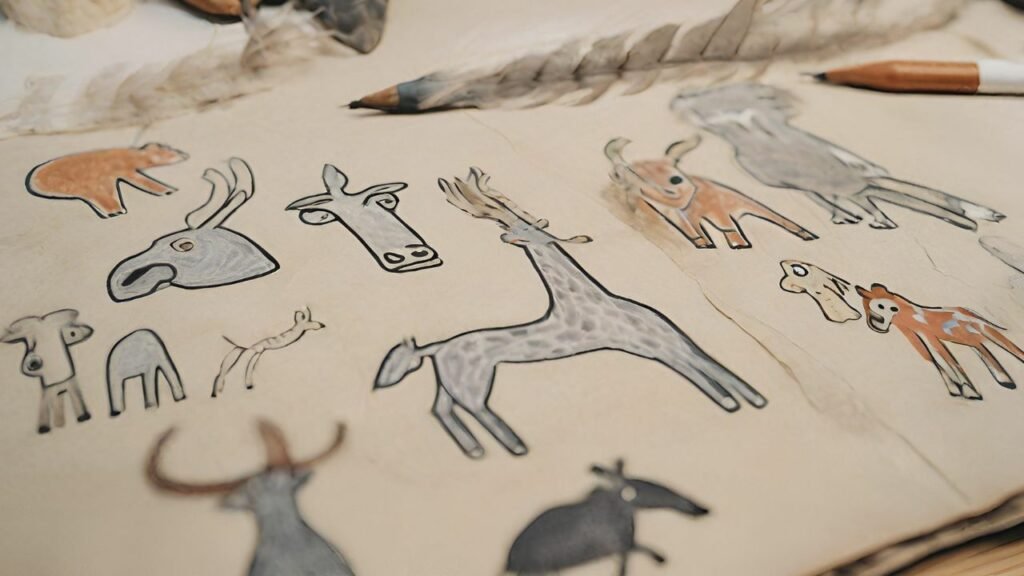
Human Figures
You’ll also find some art that shows people. These aren’t selfies, but they’re close! These drawings or carvings might show hunters, dancers, or even families. Sometimes, they’re doing something important like hunting or celebrating. It’s like a peek into what life was like back then and what people thought was important.
Symbols and Patterns
Besides animals and people, Stone Age art has lots of shapes and designs. You’ll see circles, lines, and even handprints. These aren’t just doodles; they mean something. Maybe a circle was a symbol for the sun, or a handprint was a way to say, “I was here!” These symbols were a way to share ideas or beliefs.
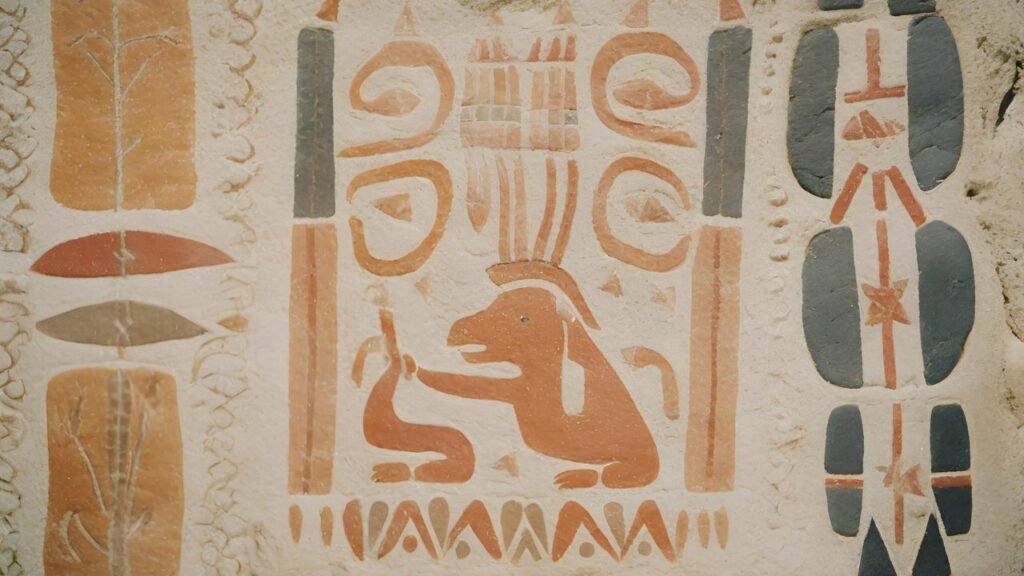
Narrative Scenes
Some Stone Age art tells a story. You might see a bunch of drawings together that show a hunt from start to finish, like a comic strip. Or maybe there’s a scene of a celebration or ritual. These are like the movies or TV shows of the Stone Age, telling stories without words.
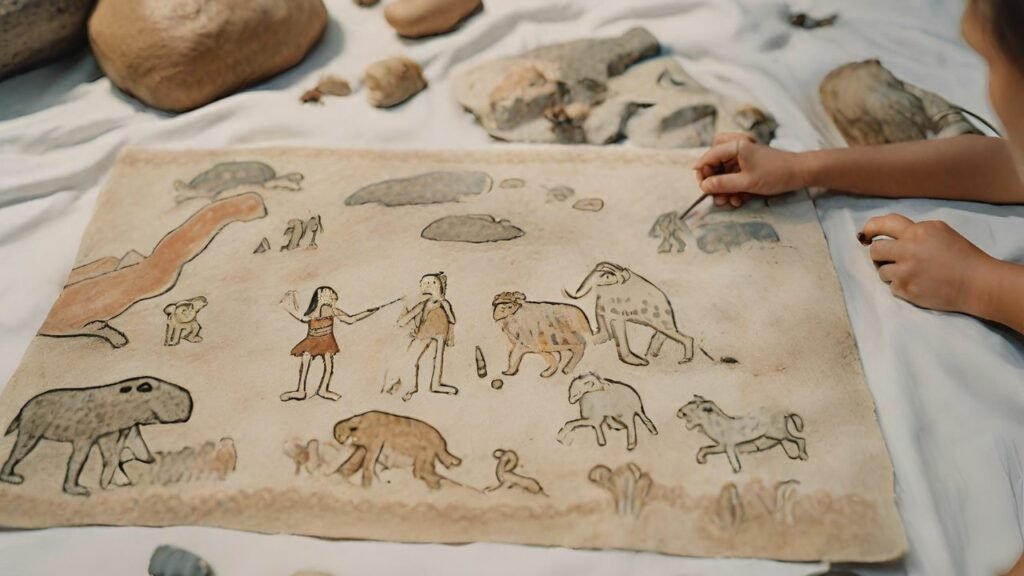
So, the next time you look at Stone Age art, remember: it’s not just pretty pictures. Each piece tells us something about what life was like and what mattered to people way back then.
Techniques and Materials
Pigments and Colors
So, how did people in the Stone Age make their art colorful? They used natural stuff like ochre, which is a kind of earthy clay, to make colors like red and yellow. They didn’t have fancy paint tubes, but they were pretty smart about using what they had around them to make their art pop.
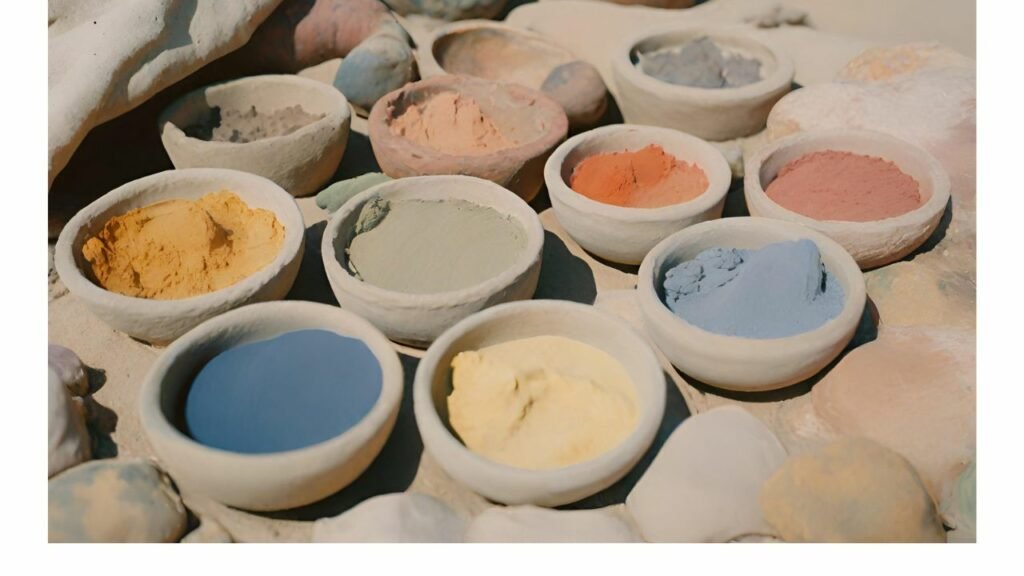
Tools
You might wonder what kind of tools they used to make all this art. Well, they didn’t have paintbrushes like we do, but they got creative. They could use their fingers, sticks, or even animal hair to make brushes. For carving, they used sharp stones or bones as chisels. They were like the DIY masters of their time, using whatever they could find.
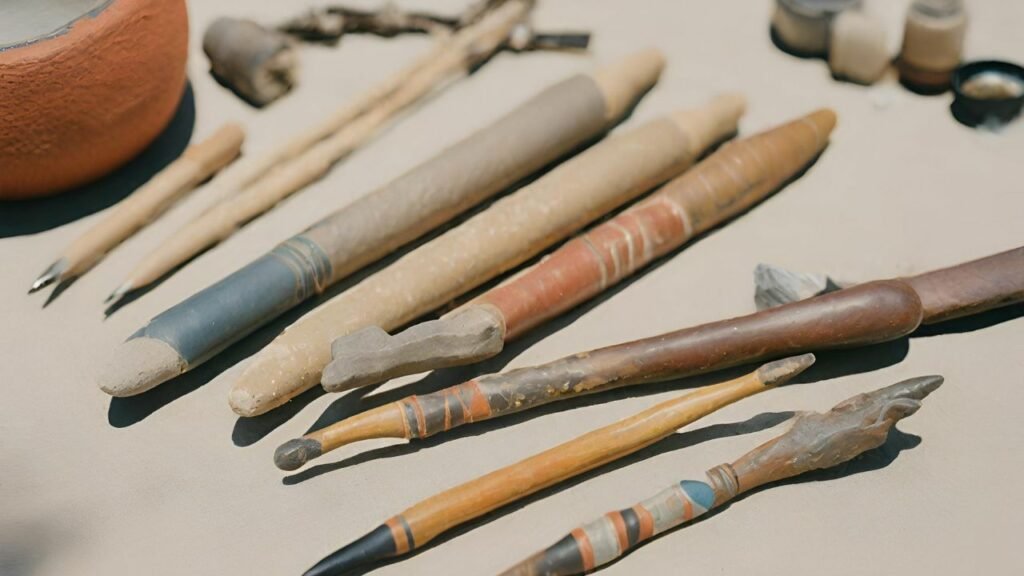
Surfaces
Last but not least, let’s talk about where they made their art. Caves were like the art galleries of the Stone Age. The walls were big, smooth surfaces perfect for painting. But they didn’t stop there. They also used bones, antlers, and even big rocks as their canvases. Imagine walking around and finding a rock with a cool drawing on it; that was pretty normal back then!
Even though they didn’t have an art supply store around the corner, people in the Stone Age were super resourceful. They used natural materials and clever tools to make art that has lasted thousands of years. Pretty cool, huh?
Cultural and Social Aspects
Ritualistic and Religious Significance
Art wasn’t just for fun in the Stone Age; it was also super important for special events like rituals and ceremonies. Maybe a cave painting was part of a big celebration or a way to ask for good luck in hunting. Some people think that certain symbols or figures might have been used to talk about gods or spirits. So, when you see Stone Age art, remember it might have been part of something really special and important to them.
Social Structure
Art can also tell us a bit about who was boss back then and what roles different people had. For example, if most of the human figures in the art are men holding spears, that might mean men were mainly the hunters. Or if you see a lot of those Venus figurines that look like women, it could mean women had a special role in the community. So, the art gives us clues about how people lived and what was important to them.
Trade and Exchange
Now, here’s something cool: sometimes the same kinds of art or materials show up in different places far away from each other. This could mean that people were trading—like swapping a cool carved bone for some colorful ochre. It’s like people were sharing their art supplies and ideas, even back then!
So, Stone Age art isn’t just old drawings and carvings; it’s like a window into how people lived, what they believed, and how they got along with each other. It’s way more than just pretty pictures; it’s a piece of the puzzle of human history.
Preservation and Discovery
Archaeological Sites
You know how we find out about all this cool Stone Age art? People called archaeologists go on treasure hunts to special places where they dig up old stuff. Places like caves in France or rocky areas in Africa have been gold mines for finding ancient art. When they find something, it’s like hitting the jackpot because it helps us learn more about people from way back then.

Conservation Efforts
Finding the art is just the first step. The next big thing is keeping it safe so it doesn’t get ruined. This is super important because we want people in the future to see it too. So, experts use all kinds of tricks to protect the art. They might control the temperature and air in a cave or put a special coating on a sculpture to keep it from breaking down. It’s like putting a priceless painting in a super-secure frame.
So, thanks to these awesome digs and the hard work to keep the art safe, we get to travel back in time and see what life was like thousands of years ago. And the best part? We’re saving it so that people years from now can be amazed by it too!
Conclusion
Legacy and Influence
You might think Stone Age art is just old stuff, but guess what? It’s actually super important even today! Artists now get inspired by those ancient drawings and sculptures. They might use similar shapes, colors, or ideas in their own art. So, in a way, those Stone Age artists were like the first trendsetters, and their style is still cool today!
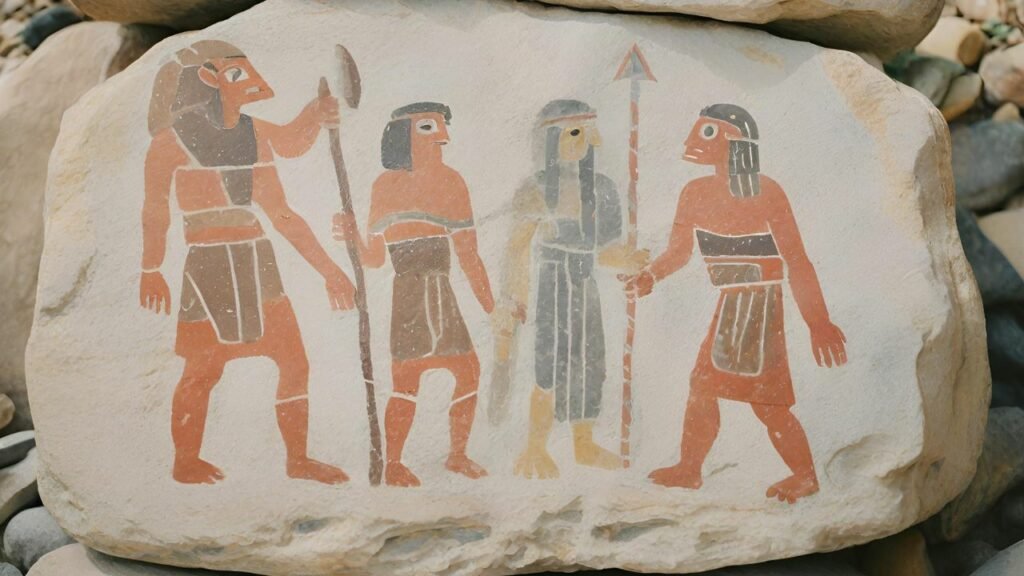
Unanswered Questions
Now, we’ve learned a lot, but there are still some big questions that even experts are scratching their heads about. Like, what do some of those weird symbols really mean? Or how exactly did they make those colors last so long? Researchers are still digging (literally!) to find answers. Who knows, maybe someday you’ll read about a new discovery that solves one of these mysteries!
So, that’s the scoop on Stone Age art. It’s not just ancient history; it’s a part of who we are today. And there’s still more to discover, which makes it even more exciting!

